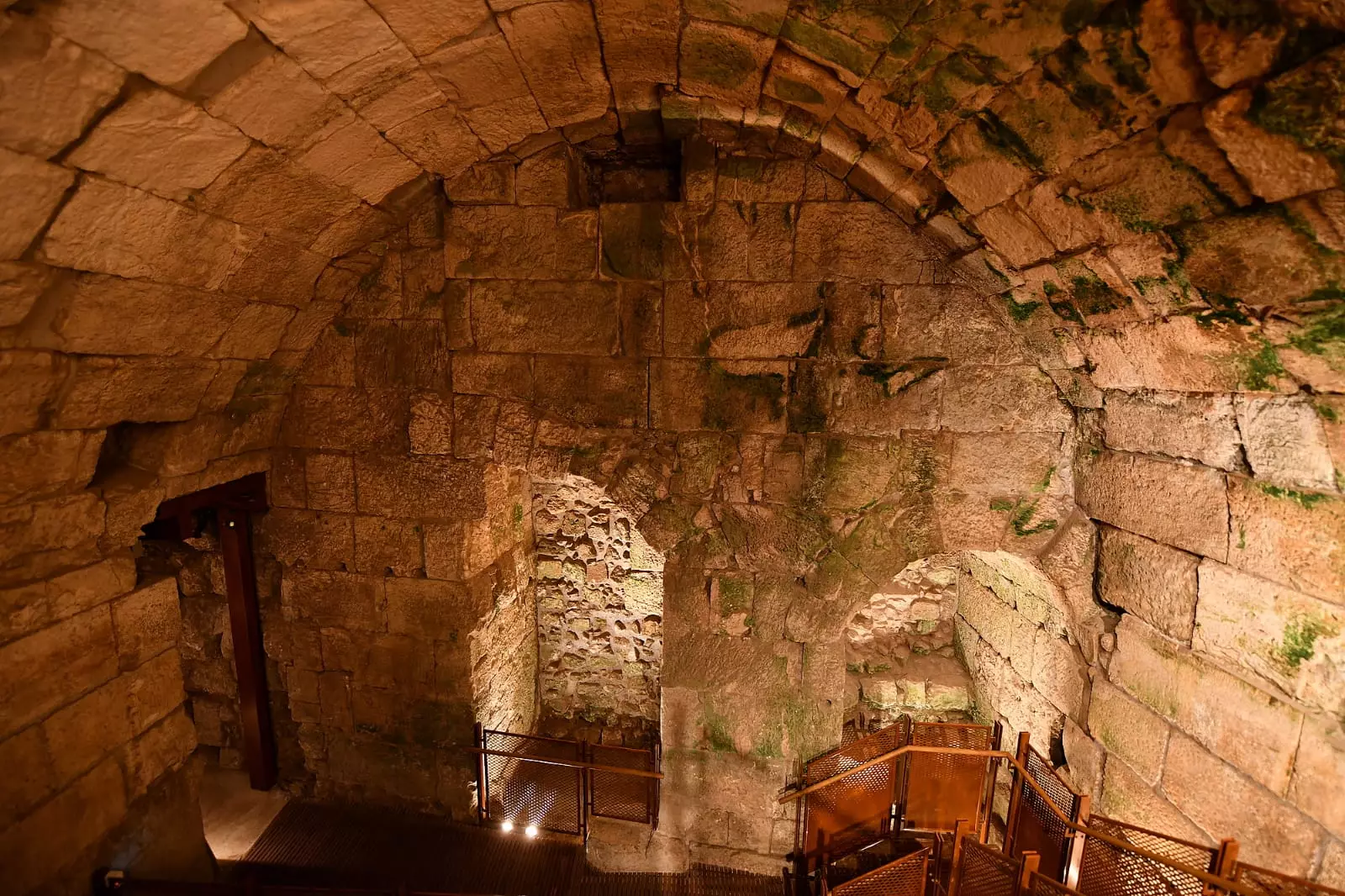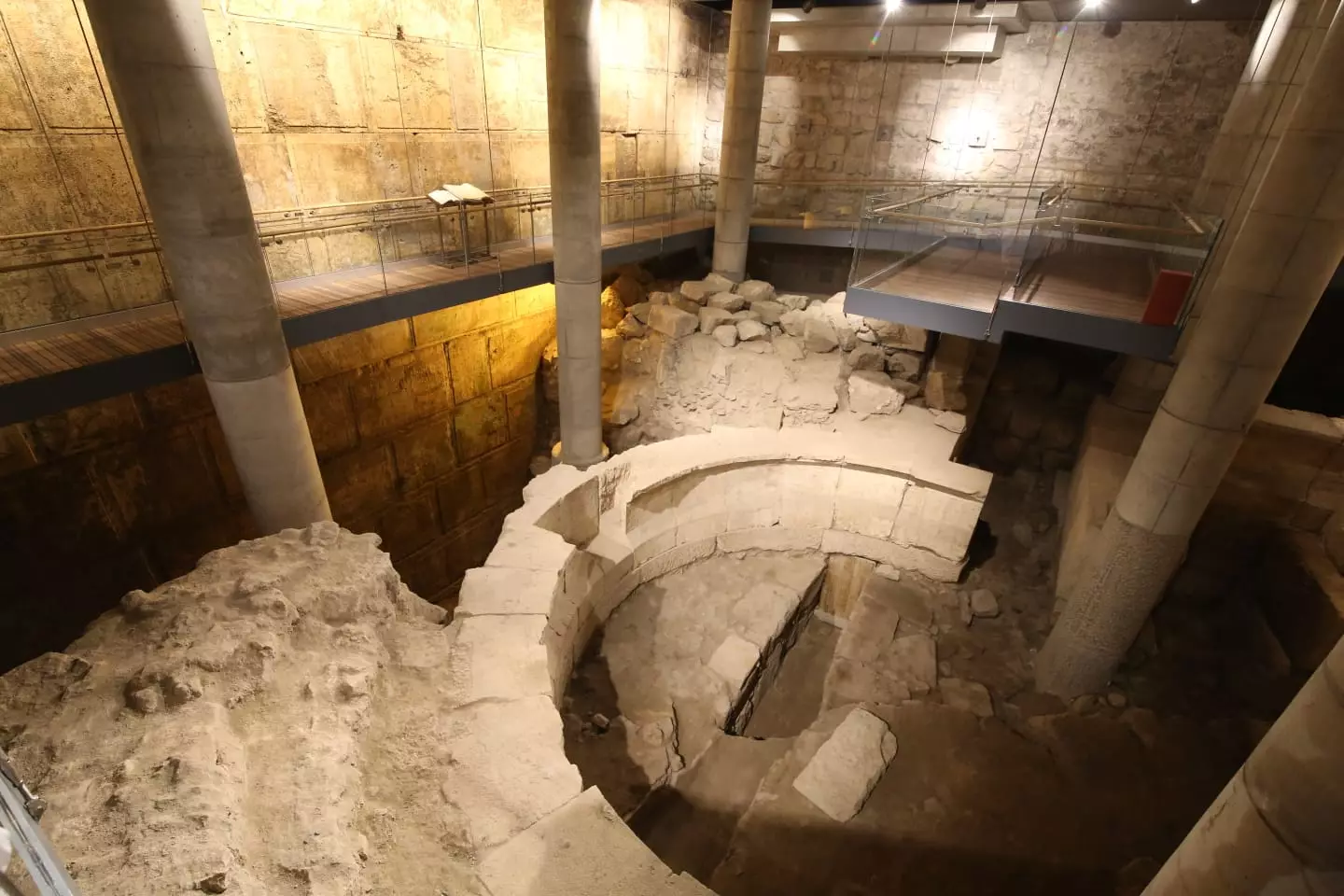The wailing wall either western wall (in Hebrew, hotel ) is one of the most global tourist icons of Israel which, before the pandemic, received millions of visits a year, holding number one as its most visited place. It is, without a doubt, special for travelers and pilgrims -it is the holiest place for Jews- but it is also a must for other visitors, due to its magnificence and history, among others.
Now the Wall has a new route , which is added to another previous one, to be done on foot. Since November, a new route takes the visitor back to the most glorious days of the second temple (530 BC and 70 AD) and descends an additional level below ground along the remains of the Great Bridge -thus the itinerary is baptized- used by pilgrims who went to pray at the Temple.
The route includes several rooms and spaces with new and captivating discoveries from the time and a novel exhibit of the Western Wall levels. Tours can be booked through the Kotel's website.

Kotel Tunnels, Jerusalem.
See pictures: 33 old photos of the most famous places in the world
THE NEW FINDINGS IN THIS SECOND ROUTE
The inauguration of this tour is of the utmost importance not only for the Western Wall but also for Jerusalem and Israel, after eight years of in-depth archaeological study and preservation. Now, the Western Wall tunnels have two route options , each of which takes the visitor to parts of the Kotel hidden from view despite being located on outer, surface levels of the Western Wall.
"The new route is about a magnificent structure from the Second Temple period that was very well preserved and was discovered in new excavations," they inform Traveler.es from the Wailing Wall.
According to what they confirm, when doing the investigations, some believed that it was the structure of a guest house for important guests who came to the Temple. There are also those who claim that the structure was built to house the supreme court of Jerusalem , the Sanhedrin, after it was moved from the Hall of Hewn Stone on the Temple Mount.
Architecturally, many components that are characteristic of the magnificent construction of the Second Temple period were preserved in this structure.

Findings on the new route at the Western Wall.
The structure is about 20m long by 19m wide, and apparently underwent changes years before the destruction of the Temple. “The large space of the room was divided into smaller areas and the bridge over it was enlarged. In one of the new rooms a ritual bath, one of the largest found in Jerusalem from this period (530 BC and 70 AD)”.
As well as found a water source amazing by piercing the north wall of the ritual bath. Even today the water flows throughout the year. “But the greatest wonder is the ritual bath drain opening, which is over 2,000 years old and still works, so the ritual bath waters continue to flow deep into the earth without interruption.”
Another of the surprises in the excavation was to find a structure similar to that of a theater under the arch. This theater could hold over 200 people and apparently served as an odeon for limited performances or as a meeting place for the nation's dignitaries to make leadership decisions. The construction of this theater was never completed , leading researchers to believe that it may never have been used.
